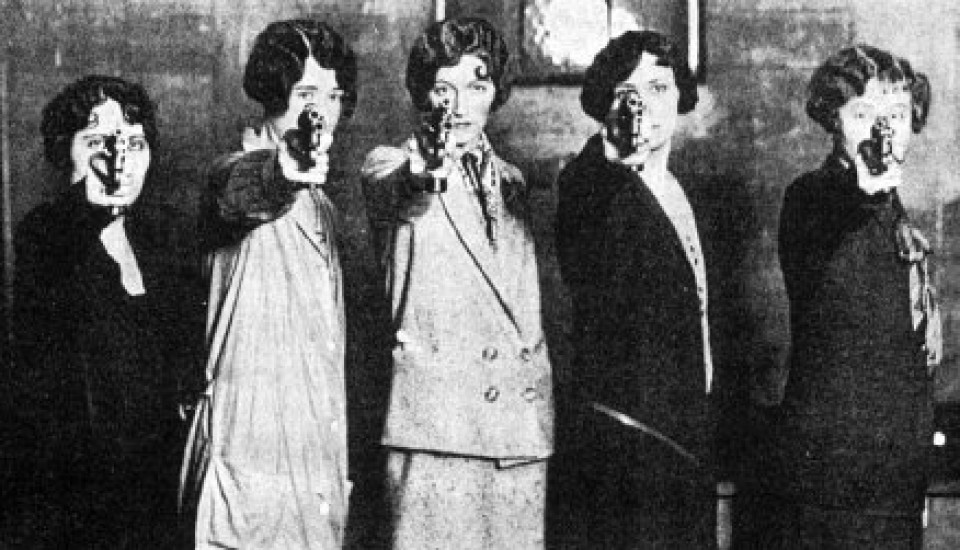G&A Perspectives: 25 Ways to Make Women Feel at Home On the Range
by Kyle Wintersteen | October 14th, 201412
Attention, ladies: We male shooters haven’t always been a welcoming bunch, but we want women to get involved in shooting and hunting and we have the stats to prove it. For instance, did you know that nearly two in five new shooters are women, and most were introduced to firearms as adults?
You see, we men take the responsibility of introducing you to firearms seriously. With a little care on our part, we know that if you try shooting, you’re probably going to like it and perhaps even develop a lifelong passion for the sport. Given these acknowledgements, here’s why females are joining the shooting ranks at a record pace, plus 25 savvy tips for helping women feel at home on the range.
Female Shooters On the Rise
The rise in female shooters among our ranks is largely a result of changing attitudes and perceptions. Shooting ranges and hunting cabins are generally no longer men’s refuges but places where women are also welcomed.
Participation by female shooters has in turn skyrocketed, fueled by their interest in hunting, personal defense and plain old fun. According to the National Shooting Sports Foundation (NSSF), nearly half of the participants in itsFirst Shots program for beginner shooters are female, 76 percent of whom said they were motivated by an interest in self-defense.
Thanks to programs such as First Shots as well as regular folks willing to introduce women to shooting, the female segment of the shooting community is expanding at a record pace. According to a report by the research firm Responsive Management titled “Analysis of Sport Shooting Participation in the U.S.,” 37 percent of new target shooters are female, whereas only 22 percent of established target shooters are female. That’s quite a jump, especially given the report’s finding that 20 percent of all target shooters began in the last five years. This new crop of shooters is also far younger, according to the NSSF, with an average age of 33 compared with established shooters’ average age of 43. Yet, says the NSSF, these aren’t necessarily folks who grew up in gun-owning households; 77 percent got started after their 18th birthday.
Hunting participation rates among women indicate a similar trend. According to a2009 report by the National Sporting Goods Association, the number of female hunters grew from 3,041,000 in 2008 to 3,204,000 in 2009, a 5 percent increase. Now, more than 16 percent of hunters overall are female.
Barriers to Entry
So, traditionally, why have fewer women participated in shooting, and what barriers may remain? A 1990 conference at the University of Wisconsin-Stevens Point, “Breaking Down Barriers to Participation of Women in Angling and Hunting,” identified what I believe to be the key culprits, problems that linger to this day:
- Poor images and stereotypes of typical gun owners, particularly as portrayed in anti-gun media stories.
- Expensive startup costs.Many women don’t want to spend a few hundred bucks to try an activity they may not enjoy.
- Traditionputs social pressure on women to avoid shooting and choose activities that are perceived as more feminine.
These, among other things, have without question prevented some women from joining the shooting sports. When a large portion of the media is shaming female hunters such as Melissa Bachman and Kendall Jones for legally hunting or painting gun owners, and even guns themselves, as evil, it doesn’t exactly encourage more female involvement in hunting or shooting. The high financial cost of shooting and the traditional societal pressures on women certainly don’t help either.
However, I believe there is another common factor that serves as an additional barrier to entry, and for that, I have a story.
Bad First Experiences
A friend of mine wasn’t even sure she wanted to become a hunter or shooter, but 30 years ago she did want to give it a try. “A few weeks after I turned 13, my dad was headed out the door to go pheasant hunting, so I asked to join him,” she recalled. “He said, ‘Well then, we have to see if you can shoot.’”
Her father escorted her to the backyard, handed her a lightweight, 12-gauge side-by-side with a high-brass shotshell in the chamber and — shamefully — told her, “Go ahead, shoot it.”
“The gun kicked the snot out of me, and my dad just laughed,” she said. “I went inside with tears in my eyes and never touched a gun again.”
I wonder: Had my friend been properly introduced to shooting, would she have developed a lifelong love of the sport? Does her father regret doing literally everything wrong, from handing his daughter a heavy-recoil firearm to providing minimal instruction to intimidating her with his attitude? Or, more likely given the era, did he intend all along to scare his daughter away from shooting?
Many men (and women) are highly accommodating of women interested in giving shooting a try, but all too many exhibit the same reckless machismo as my friend’s father. A YouTube search for “girl gun recoil” turns up countless examples of unsafe, unproductive acts of stupidity. Others have good intentions of introducing women to shooting but lack the knowledge to go about it properly.
Fortunately, all barriers to entry for female shooters, including that first introduction, can be overcome with a little care. Introduce women to shooting the right way: in a fun, safe environment that may just lead to a lifelong passion for firearms.
